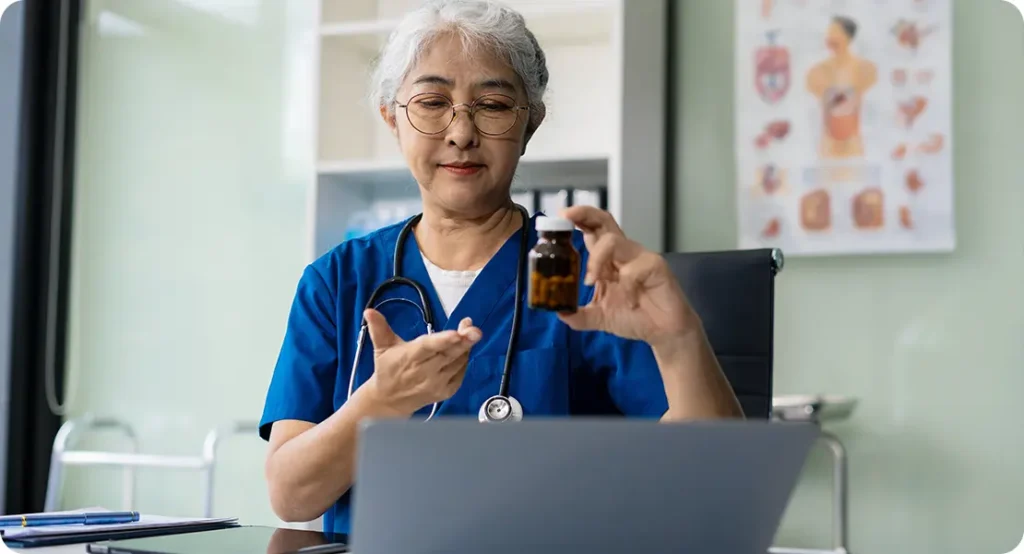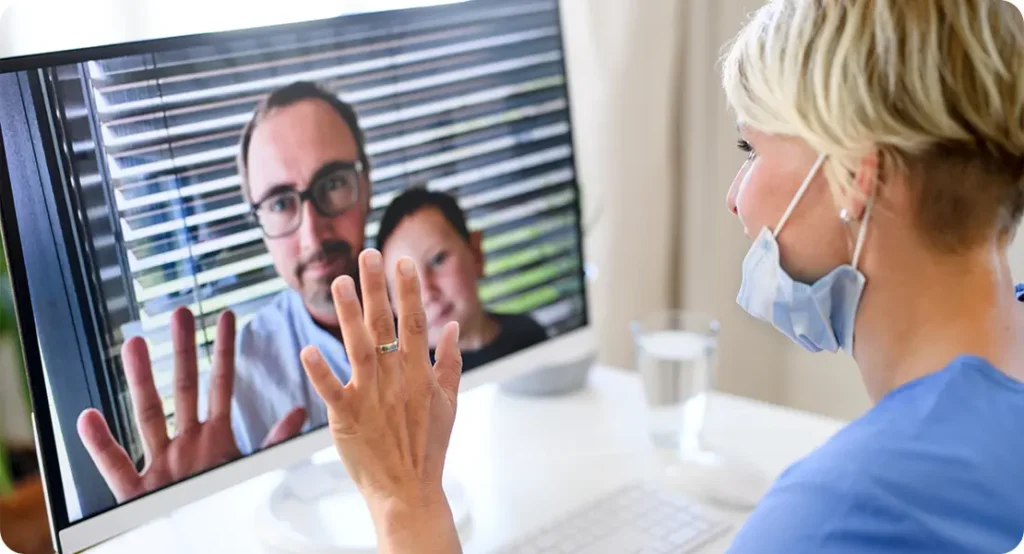Cataract surgery is one of the most commonly performed procedures worldwide, but getting to and from appointments isn’t always easy—especially if you live in a rural area, have mobility challenges, or are managing other health conditions. That’s where teleophthalmology steps in. It’s not just a buzzword; it’s reshaping the way eye care is delivered, before and after surgery.
In this article, we’ll take a deep dive into how teleophthalmology is used for pre-operative assessments, surgical triage, and post-operative follow-ups. You’ll see where the technology excels, what the research says, and where we’re headed next. If you or someone you care for is considering cataract surgery, this could change the way you experience the entire process.
What Is Teleophthalmology?
At its core, teleophthalmology is the use of digital communication tools—think video calls, remote imaging, cloud-based platforms—to deliver eye care services. It allows ophthalmologists to assess, diagnose, and manage patients without needing them to physically attend the clinic for every stage of care.
While it’s been around for some time, the pandemic dramatically accelerated adoption. Practices and hospitals were forced to explore remote alternatives—and many found that, with the right protocols and tech, teleophthalmology wasn’t just a stopgap. It was better in many ways.
Why Cataract Care Is Well-Suited to Telemedicine
Cataracts develop slowly and predictably, and their diagnosis doesn’t typically require invasive testing. Much of the pre-surgical conversation—history-taking, expectations, medication reviews, and even vision tests—can be conducted remotely. Similarly, after the procedure, unless there are complications, routine follow-ups don’t always need in-person reviews.
This makes cataract care a perfect fit for remote models. Patients can access their consultant from the comfort of home, reducing unnecessary travel and avoiding long waits. Surgeons can triage efficiently, identify urgent cases, and prioritise accordingly. Everyone benefits.
Pre-Operative Assessments via Teleophthalmology
1. History-Taking and Risk Assessment
The pre-operative journey begins with a thorough medical and ocular history. Teleconsultations make this easy. Patients can speak directly with a consultant or nurse specialist to discuss symptoms, visual goals, systemic diseases, and medications.
This stage is crucial for flagging risk factors like diabetes, previous eye surgery, or use of medications like anticoagulants or corticosteroids. Identifying these early via remote assessment allows the surgical team to plan accordingly and avoid last-minute cancellations.
2. Digital Vision Screening and Refraction Tools
While it’s true that accurate refraction and biometry must be done in person, basic vision screening tools are now available digitally. Some platforms allow patients to perform near-vision charts, contrast sensitivity tests, or even rudimentary Amsler grid assessments using a phone or tablet.
These tools won’t replace in-clinic measurements, but they’re incredibly useful for triaging. They help clinicians decide who needs urgent review and who can wait for a routine slot.
3. Consent and Expectations Management
Cataract surgery isn’t just about restoring sight—it’s also about aligning expectations. Some patients want freedom from glasses. Others are more concerned about night vision. Teleophthalmology allows ample time to have this discussion without pressure, often involving both the surgeon and a clinical assistant.
Patients can receive digital leaflets, video walkthroughs, and diagrams to help them understand lens options, risks, and recovery timelines. Informed consent becomes more robust, not less, when people are given time and space to absorb information.

Remote Triage: Who Needs Surgery Now?
Triage is one of the most valuable contributions of teleophthalmology to cataract care. In an overstretched system, being able to prioritise urgent cases—such as those with rapidly declining vision or coexisting conditions like glaucoma—is essential.
Through a quick video consult and review of referral notes, many patients can be stratified remotely into:
- Routine pathway – for stable, age-related cataracts with no red flags.
- Urgent pathway – for cases impacting driving, work, or independent living.
- Complex referral – for patients needing joint care (e.g. retinal or corneal input).
This reduces unnecessary congestion in face-to-face clinics and allows surgeons to focus their time on those who truly need immediate attention.
Teleophthalmology in Post-Operative Care
1. Immediate Post-Op Check-Ins
Within the first 48 hours of cataract surgery, most patients are keen for reassurance. Are their symptoms normal? Is the eye healing well? A brief video check-in can address this without requiring travel.
Nurses or surgical assistants can guide patients through signs to watch for—redness, discomfort, glare, or floaters—and flag any signs of infection or inflammation that would require urgent follow-up.
2. Monitoring Visual Recovery Over Time
Beyond the initial recovery period, teleophthalmology allows for periodic assessments to ensure vision is improving as expected. Questionnaires, digital logbooks, and even remote visual acuity apps can give clinicians a useful sense of progress.
More sophisticated tools, like home-based OCT devices, are being trialled to allow monitoring of the retina remotely—particularly useful for high-risk patients with coexisting macular issues.
3. Enhancing Compliance and Follow-Up Rates
One overlooked benefit of teleophthalmology is that patients are more likely to stick to their follow-up schedule when it’s convenient. Post-op non-attendance is a common problem, often due to transport, cost, or mobility issues. When care comes to them, compliance improves.
It also allows clinicians to keep tabs on patients with borderline outcomes—those with residual refractive error, dry eye, or posterior capsular opacification—who might otherwise slip through the cracks.
Technology at the Centre: Platforms, Devices, and Tools
For teleophthalmology to work, the tech has to deliver. Fortunately, a wide range of platforms now cater specifically to eye care. Some of the most commonly used tools include:
- HIPAA-compliant video call systems – like Attend Anywhere or AccuRx, commonly used in NHS trusts.
- Cloud-based imaging platforms – that allow photos of the anterior segment or fundus to be uploaded for remote review.
- Patient portals – which give access to consent forms, educational content, and appointment bookings.
Home monitoring devices are also entering the mainstream. For example, some smart devices can measure visual acuity or track intraocular pressure. These aren’t yet a replacement for professional tools, but they are useful adjuncts—especially in chronic cases or for research.
Bridging Gaps in Access: A Win for Rural and Elderly Populations
Let’s face it—getting to an eye clinic isn’t always simple. For patients in rural areas, those with limited transport options, or anyone relying on others to get around, teleophthalmology can be life-changing.
Instead of waiting weeks for a clinic appointment miles away, they can access the same expertise from home. This reduces delays, avoids deterioration, and improves outcomes. For elderly patients, especially those managing multiple health issues, it reduces the burden of travel and allows for greater independence.
Clinical Outcomes: What Does the Research Say?
So far, the evidence around teleophthalmology in cataract care is promising. Studies have shown that:
- Triage accuracy is high, with remote assessments able to match in-person referrals in most cases.
- Patient satisfaction is strong, particularly when digital materials are well-designed and staff are trained in virtual communication.
- Complication rates are not increased, suggesting remote follow-ups are a safe alternative in low-risk cases.
A 2022 review published in Eye journal found that teleophthalmology reduced wait times for cataract surgery by over 30% in some regions and increased satisfaction scores among both patients and clinicians. The key is having clear protocols to escalate cases when needed.
Addressing Limitations: What Teleophthalmology Can’t Do (Yet)
Despite its benefits, teleophthalmology isn’t a silver bullet. Some tasks still require in-person care:
- Biometry and IOL calculations can’t be done remotely. These measurements are crucial to surgical planning and must be precise.
- Slit-lamp exams and dilated retinal views are only possible with proper equipment.
- Emergency complications, such as endophthalmitis or retinal detachment, need urgent physical review.
There’s also the digital divide to consider. Not all patients are tech-savvy or have access to stable internet. Training, tech support, and alternate pathways must exist for those who can’t or don’t wish to engage digitally.

The Future of Teleophthalmology in Cataract Care
Looking ahead, teleophthalmology is likely to become a standard part of cataract surgery pathways—especially in hybrid models. We may see:
- Automated triage algorithms, powered by AI, to analyse referrals and flag urgent cases.
- Wearable vision monitors, offering continuous post-op tracking.
- Remote pre-op classes, where groups of patients receive education together via webinars or virtual workshops.
- Integrated care pathways, where optometrists, ophthalmologists, and GPs share data and collaborate remotely.
With pressures on the NHS and an ageing population, models that reduce in-clinic load while maintaining high standards will only grow in value.
Frequently Asked Questions (FAQs)
- Is teleophthalmology safe for cataract patients?
Yes, when used appropriately, teleophthalmology is safe for both pre- and post-operative cataract care. Research has shown that virtual consultations can effectively triage patients, manage expectations, and monitor recovery. Safety is enhanced when clinics follow clear protocols on when to escalate to face-to-face reviews. In low-risk cases, remote care reduces unnecessary travel and wait times without compromising outcomes. However, complex or emergency situations should always be reviewed in person. - Can my eye be fully assessed remotely before cataract surgery?
Not entirely. While a large portion of the pre-operative process—like medical history, symptom review, and discussion of lens options—can be managed remotely, certain tests such as optical biometry, keratometry, and slit-lamp examinations must be done in person. These are essential for determining the right intraocular lens power and ensuring the eye is suitable for surgery. So, think of teleophthalmology as a complementary step, not a total replacement for clinic visits. - How are remote post-op appointments conducted?
Most remote post-op appointments involve a video call with a nurse, optometrist, or consultant. You may be asked to describe your symptoms, show your eye on camera, or perform basic vision tasks. If needed, you can send photos of your eye in advance. This setup is ideal for confirming that healing is progressing well. If any red flags arise—like severe pain, vision loss, or intense redness—you’ll be booked in for a face-to-face check immediately. - What are the benefits of teleophthalmology for elderly or rural patients?
Teleophthalmology greatly benefits elderly patients and those living in rural or underserved areas. It eliminates the need for long travel times, reduces dependence on family or transport services, and enables quicker access to specialists. For many, this translates into reduced stress and more consistent follow-up. In fact, older patients often report higher satisfaction rates with virtual follow-ups when they’re guided clearly through the process and supported with user-friendly technology. - Is teleophthalmology available on the NHS?
Yes, in many parts of the UK, teleophthalmology is now part of standard NHS practice, particularly for triage and follow-up care. Programmes like the NHS Long Term Plan support digital transformation, and tools like Attend Anywhere and the NHS app are increasingly used to offer remote eye consultations. Availability varies by region and trust, so it’s best to check with your local clinic or ophthalmology service to see what’s offered.
Final Thoughts
Teleophthalmology isn’t just about convenience—it’s about rethinking access, equity, and efficiency in cataract care. Whether it’s helping someone get seen faster, reducing post-op anxiety, or making follow-up more accessible, it’s clear this technology has a major role to play.
That said, it’s not a total replacement for in-person expertise. The most effective systems will combine the best of both worlds: digital tools for what can be done remotely, and in-clinic care for what can’t.
If you’re considering cataract surgery or supporting a loved one through it, ask your clinic what teleophthalmology options are available. You might be surprised at just how much can be done from the comfort of your living room. To take the next step, you can book a consultation with one of our expert cataract surgeons at the London Cataract Centre.
References (Harvard Style)
- Thomas, P.B.M., Hildreth, A., Patel, V., Shanmuganathan, V. and El-Sheikh, R.H., 2022. Teleophthalmology for cataract surgery: impact on wait times and service delivery in the UK. Eye, 36(2), pp.292–298.
- Li, J.O., Liu, H., Ting, D.S.W., Jeon, S., Chan, R.V.P., Kim, J.E., Sim, D.A., Thomas, P.B.M. and Lin, H., 2021. Digital technology, tele-medicine and artificial intelligence in ophthalmology: A global perspective. Progress in Retinal and Eye Research, 82, p.100900.
- Jin, K., Lu, H. and Su, J., 2020. Impact of telemedicine on the diagnosis and management of anterior segment eye diseases. BMJ Health & Care Informatics, 27(3), e100128.
- Myung, D.J., Jais, A., He, L., Blumenkranz, M.S. and Chang, R.T., 2014. Simple, low-cost smartphone adapter for rapid, high-quality retinal imaging in low-resource settings. Translational Vision Science & Technology, 3(1), pp.1–8. Available at: https://tvst.arvojournals.org/article.aspx?articleid=2121530
- NHS England, 2023. Delivering the NHS Long Term Plan: Digital Transformation and Telemedicine Expansion. [online]

